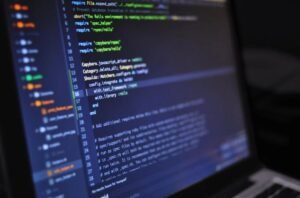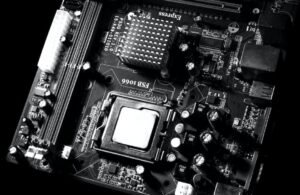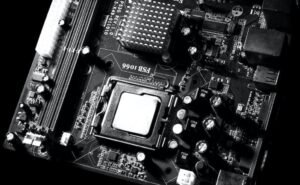Machine Learning or Regression
When it comes to analyzing data and making predictions, two popular techniques are *Machine Learning* and *Regression*. Both methods are widely used in various fields, but they have distinct differences. Understanding these differences can help you choose the right approach for your data analysis tasks.
Key Takeaways
- Machine Learning and Regression are techniques used for data analysis and prediction.
- Machine Learning involves using algorithms to teach computers to learn and make predictions without being explicitly programmed.
- Regression, on the other hand, is a statistical method used to model the relationship between a dependent variable and one or more independent variables.
- Machine Learning is generally more flexible and can handle complex data patterns, while Regression is simpler and interpretable.
- Both approaches have their strengths and weaknesses, so the choice between Machine Learning and Regression depends on the specific task and data characteristics.
*Machine Learning* is a branch of Artificial Intelligence where algorithms enable computers to learn from and make predictions or decisions based on data. It uses statistical techniques to automatically identify patterns and relationships, allowing computers to perform tasks without being explicitly programmed. This makes *Machine Learning* suitable for complex data analysis tasks, such as image recognition, natural language processing, and fraud detection. *Machine Learning* algorithms can handle large datasets and are more capable of handling non-linear data patterns.
*Regression*, on the other hand, is a statistical method used to model the relationship between a dependent variable and one or more independent variables. *Regression* aims to find the best-fitting line or curve that describes the relationship between variables. It is particularly useful for predicting numerical values, such as predicting housing prices based on factors like location, size, and number of rooms. *Regression* is interpretable and can provide insights into the importance and direction of independent variables on the dependent variable, making it useful for explanatory analysis.
Machine Learning vs. Regression: A Comparison
| Machine Learning | Regression | |
|---|---|---|
| Complexity | Can handle complex data patterns | Simple and interpretable |
| Model Interpretability | Less interpretable due to complex algorithms | Interpretable, provides insights into variable importance |
| Data Requirements | Require large amounts of data | Require fewer data points |
Machine Learning Algorithms
- Supervised Learning algorithms: *Random Forest*, *Support Vector Machines*, *Neural Networks*
- Unsupervised Learning algorithms: *Clustering*, *Dimensionality Reduction*
- Reinforcement Learning algorithms: *Q-Learning*, *Deep Q-Networks*
Many different machine learning algorithms are available, each with its own strengths and limitations. *Random Forest* is an ensemble learning method that combines multiple decision trees to make predictions. *Support Vector Machines* aim to create an optimal hyperplane to separate data points into different classes. *Neural Networks* are inspired by the structure of the human brain and consist of interconnected layers of artificial neurons.
Regression Models
- *Linear Regression* models the relationship between variables using a linear equation.
- *Logistic Regression* models the relationship between variables using a logistic function.
- *Polynomial Regression* models nonlinear relationships by adding polynomial terms to the equation.
In regression analysis, different models can be used depending on the nature of the relationship between the variables. *Linear Regression* assumes a linear relationship between the independent and dependent variables. *Logistic Regression*, on the other hand, is used when the dependent variable is categorical. *Polynomial Regression* allows for nonlinear relationships by adding polynomial terms to the equation.
Conclusion
When deciding between *Machine Learning* and *Regression* for data analysis and prediction tasks, it’s essential to consider the complexity of the data patterns, the interpretability of the model results, and the amount of available data. While *Machine Learning* is more flexible and can handle complex patterns, *Regression* provides interpretability and insights into variable importance. Ultimately, the choice depends on the specific requirements of the task and the nature of the data.

Common Misconceptions
Machine Learning
- Machine learning is simple and can solve any problem instantly.
- Machine learning can replace the need for human expertise.
- All machine learning algorithms are created equal.
Regression
- Regression can only be used for predicting continuous values.
- Regression always assumes a linear relationship between variables.
- Regression models are always accurate and have no errors.
Machine Learning
- Machine learning is not a magical solution and requires thoughtful analysis and tuning.
- Machine learning complements human expertise and can automate certain tasks, but it is not a complete replacement.
- Different algorithms have different strengths and weaknesses and may perform better in specific scenarios.
Regression
- Regression can also be used to predict categorical outcomes, such as classifying data into groups.
- While regression often assumes a linear relationship, there are techniques available to model non-linear relationships as well.
- All models have some degree of error, and regression models are no exception. It is crucial to understand and account for the inherent uncertainty in predictions.
Machine Learning
- Machine learning algorithms require proper data preparation, feature engineering, and careful selection of hyperparameters to perform well.
- Combining the knowledge and experience of human experts with machine learning can lead to more accurate and valuable insights.
- Choosing the right algorithm depends on the specific problem and the nature of the data.
Regression
- Regression models are valuable tools for understanding and predicting relationships between variables.
- Non-linear regression techniques, such as polynomial regression, can capture more complex patterns in the data.
- Interpreting the results of regression analysis requires considering the underlying assumptions and limitations of the model.

Machine Learning or Regression
Machine Learning and Regression are both subfields of Artificial Intelligence (AI) that involve using data and algorithms to make predictions or decisions. While Machine Learning focuses on creating algorithms that can learn from data and improve their performance over time, Regression specifically deals with modeling the relationship between a dependent variable and one or more independent variables. In this article, we will explore various aspects of both fields and showcase them through interesting and informative tables.
Understanding Machine Learning Models
The following table illustrates different types of Machine Learning models along with their applications and notable features:
| Model | Application | Notable Features |
|---|---|---|
| Decision Tree | Customer segmentation | Easy to interpret and visualize |
| Random Forest | Medical diagnosis | Reduces overfitting and improves accuracy |
| Support Vector Machines (SVM) | Text classification | Effective in high-dimensional data |
| Neural Networks | Image recognition | Captures complex relationships in data |
Regression Analysis: Popular Models
In the field of Regression analysis, various models are used to understand the relationship between variables. The table below presents some widely-used Regression models along with their characteristics:
| Model | Assumption | Strength |
|---|---|---|
| Linear Regression | Linear relationship | Simple and interpretable |
| Logistic Regression | Binary classification | Handles both continuous and binary data |
| Ridge Regression | Reduces multicollinearity | Controls overfitting in complex models |
| Lasso Regression | Selects relevant features | Performs variable selection |
Machine Learning vs. Regression: Skillset Comparison
The table below highlights the key skills and techniques required for Machine Learning and Regression:
| Skills | Machine Learning | Regression |
|---|---|---|
| Data preprocessing | ✓ | ✓ |
| Feature engineering | ✓ | ✓ |
| Model selection | ✓ | ✓ |
| Model evaluation | ✓ | ✓ |
| Deep Learning | ✓ | – |
| Assumptions | – | ✓ |
Machine Learning Applications
Machine Learning techniques find application in various domains. The table below highlights some intriguing applications:
| Domain | Application | Impact |
|---|---|---|
| Healthcare | Disease diagnosis | Potential for early detection |
| E-commerce | Recommendation systems | Enhanced customer experience |
| Finance | Credit risk assessment | More accurate predictions |
| Transportation | Traffic prediction | Improved route planning |
Regression Analysis: Strengths and Limitations
While Regression analysis offers valuable insights, it also has strengths and limitations. The following table provides an overview:
| Strengths | Limitations |
|---|---|
| Interpretable coefficients | Assumes linear relationship |
| Identifies significant predictors | Assumes independence of errors |
| Handles both continuous and categorical variables | Vulnerable to outliers |
| Simple to implement and explain | Limited in capturing nonlinear relationships |
Evaluating Machine Learning Models
When evaluating the performance of Machine Learning models, various metrics are used. The table below presents some common evaluation metrics:
| Metric | Description |
|---|---|
| Accuracy | Measures overall correctness |
| Precision | Assesses true positive rate |
| Recall | Measures true positive sensitivity |
| F1 Score | Combines precision and recall |
Regression Analysis: Dataset Requirements
A suitable dataset is crucial for accurate regression analysis. The table below outlines some essential dataset requirements:
| Requirement | Explanation |
|---|---|
| Adequate sample size | Sufficient data to establish trends |
| Minimal missing values | Reduces bias and ensures completeness |
| Independent observations | Avoids violating assumptions |
| No multicollinearity | Prevents issues during coefficient estimation |
By exploring the various models, techniques, and applications in Machine Learning and Regression, we can harness the power of data to make intelligent predictions and informed decisions. These fields continue to evolve, allowing us to explore and unlock the potential of AI in diverse domains.
Frequently Asked Questions
What is Machine Learning?
Machine Learning is a subset of artificial intelligence that enables computers to learn and make predictions or take actions without being explicitly programmed. It involves algorithms that allow systems to improve their performance on a specific task over time by analyzing and interpreting large amounts of data.
What is Regression?
Regression is a statistical modeling technique used to analyze the relationship between a dependent variable and one or more independent variables. It aims to find the best-fit line or curve that represents the relationship between the variables. Regression models are often used for making predictions, estimating the impact of variables, and understanding the strength and direction of relationships.
How does Machine Learning relate to Regression?
Regression is one of the fundamental algorithms used in Machine Learning. It is commonly applied in various ML tasks, such as predicting house prices, forecasting sales, or analyzing the impact of advertising on sales. Machine Learning techniques, including regression, utilize mathematical and statistical algorithms to learn patterns from past data and make predictions or classifications based on new data.
What are the different types of Regression algorithms?
There are several types of Regression algorithms, including linear regression, logistic regression, polynomial regression, ridge regression, and lasso regression. Each algorithm has its own assumptions, strengths, and limitations, and is suitable for different types of data and problem domains.
How does linear regression work?
Linear regression is a statistical approach where the relationship between the dependent variable and independent variable(s) is assumed to be linear. It aims to fit a line that minimizes the sum of squared differences between the observed and predicted values. The line’s equation can then be used to make predictions for new data points.
What is the difference between regression and classification?
Regression and classification are both supervised learning techniques, but they have distinct purposes. Regression predicts a continuous numeric value, such as predicting the price of a house, whereas classification predicts a discrete categorical value, such as classifying emails as spam or not spam.
Can Machine Learning models handle non-linear relationships in data?
Yes, Machine Learning models, including regression algorithms, can handle non-linear relationships in data by utilizing techniques such as polynomial regression, decision trees, support vector machines, or neural networks. These algorithms can capture more complex patterns and non-linear relationships between variables.
What are the advantages of using Regression in predictive modeling?
Regression models offer several advantages in predictive modeling. They provide a quantitative measure of the relationship between variables, help identify the most influential variables, allow for predictive modeling and forecasting, can handle both continuous and categorical variables, and provide a framework for statistical inference and hypothesis testing.
What are the limitations of Regression?
Regression models have certain limitations, such as assuming a linear relationship between variables, being sensitive to outliers, providing limited insights into complex relationships, and requiring careful attention to multicollinearity (correlation between independent variables). Additionally, regression models may not perform well when the assumptions are violated or when the data does not adhere to linearity and distribution assumptions.




